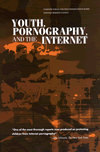|
|

Youth, Pornography, and the Internet
 Dick Thornburgh and Herbert S. Lin, Editors
Dick Thornburgh and Herbert S. Lin, Editors
480 pages, 2002.
ISBN: 0-309-08274-9 (paperback), 0-309-08441-5 (pre-publication version)
Obtain the final report from the National Academies Press
View this report in HTML
View this report as a searchable OpenBook
View the report brief in PDF
Upcoming presentations and discussions of this report (updated 28 May 2003)
Media coverage of this report
Press release (2 May 2002): No Single Solution for Protecting Kids From Internet Pornography
NAS Web Extra: Internet Pornography: Are Children at Risk?
Opening Statement by committee chair Dick Thornburgh
Listen to the webcast of the Public Briefing [RealPlayer required]
Produced in cooperation with the Board on Children, Youth, and Families
Visit the originating project's page
The Internet has changed the way we access the world. This is especially true for kids, who soak up new technologies like eager little sponges. They have access to an enormous array of material, including educational links, sports info, chat rooms--and, unfortunately, pornography. But we must approach our need to protect children with care to avoid placing unnecessary restrictions on the many positive features of the Internet.
Youth, Pornography, and the Internet examines approaches to protecting children and teens from Internet pornography, threats from sexual predators operating on-line, and other inappropriate material on the Internet. The National Research Council's Computer Science and Telecommunications Board explores a number of fundamental questions: Who defines what is inappropriate material? Do we control Internet access by a 17-year-old in the same manner as for a 7-year-old? What is the role of technology and policy in solving such a problem in the context of family, community, and society?
The book discusses social and educational strategies, technological tools, and policy options for how to teach children to make safe and appropriate decisions about what they see and experience on the Internet. It includes lessons learned from case studies of community efforts to intervene in kids' exposure to Internet porn.
Providing a foundation for informed debate, this very timely and relevant book will be a must-read for a variety of audiences.
Other Publications from this Study:
Committee to Study Tools and Strategies for Protecting Kids from Pornography and Their Applicability to Other Inappropriate Internet Content
DICK THORNBURGH, Kirkpatrick & Lockhart LLP, Chair
NICHOLAS J. BELKIN, Rutgers University
WILLIAM J. BYRON, Holy Trinity Parish
SANDRA L. CALVERT, Georgetown University
DAVID FORSYTH, University of California, Berkeley
DANIEL GEER, @Stake
LINDA HODGE, Parent Teacher Association
MARILYN GELL MASON, Independent Consultant
MILO MEDIN, Excite@Home
JOHN B. RABUN, National Center for Missing and Exploited Children
ROBIN RASKIN, Ziff Davis Media
ROBERT J. SCHLOSS, IBM T.J. Watson Research Center
JANET WARD SCHOFIELD, University of Pittsburgh
GEOFFREY R. STONE, University of Chicago
WINIFRED B. WECHSLER, Independent Consultant
Staff
Herbert S. Lin, Senior Scientist and Study Director
Gail Pritchard, Program Officer (through June 2001)
Joah G. Iannotta, BOCYF Research Assistant
Janice Sabuda, Senior Project Assistant
Daniel D. Llata, Senior Project Assistant (through May 2001)
Marjory S. Blumenthal, Executive Director
Sponsors
The study was supported by Grant No. 1999-JN-FX-0071 between the National Academy of Sciences and the U.S. Departments of Justice and Education; Grant No. P0073380 between the National Academy of Sciences and the W.K. Kellogg Foundation; awards (unnumbered) from the Microsoft Corporation and IBM; and National Research Council funds.
Any opinions, findings, conclusions, or recommendations expressed in this publication are those of the authoring committee and do not necessarily reflect the views of the organizations or agencies that provided support for this project.
|
|
|
